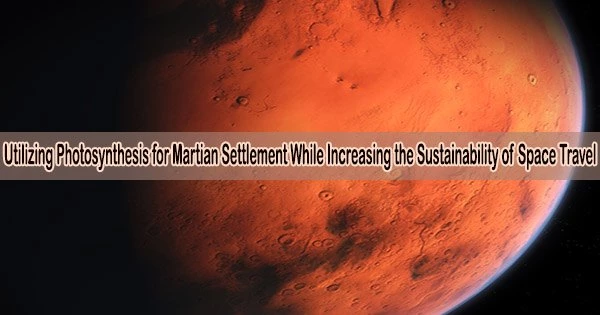The moon and Mars could have additional life support systems thanks to sustainable solar power harvesting technologies being developed by researchers. While the concept of using photosynthesis for Martian occupation is promising, it’s important to recognize the numerous challenges and complexities involved.
Researchers evaluate a new method that could transform sustainable, green energy from beyond the Earth’s atmosphere in a study that appears in Nature Communications. They are utilizing photosynthesis, a daily chemical process that plants go through, to produce energy to assist in making the space sector more sustainable.
The University of Warwick’s research examines the potential for using a unique gadget known as a semiconductor to collect sunlight on the moon and Mars. The instruments are intended to support Martian life support systems.
These “artificial photosynthesis devices” use just sunlight to transform water into oxygen while recycling carbon dioxide. These mechanisms are the same ones that keep plants alive on Earth.
In compared to conventional systems now in use on the International Space Station, these integrated systems have the benefit of directly harnessing solar power and potentially save weight during lengthy space missions, making space travel more effective.
Human space exploration faces the same challenges as the green energy transition on Earth: both require sustainable energy sources. With sunlight being so abundantly available in space, we have shown how this source could be used to harvest energy much like plants back on Earth for life support systems for long-term space travel. The technology could provide ample oxygen production and carbon dioxide recycling on both moon and Mars.
Professor Katharina Brinkert
In order to make it possible to explore our solar system, there is a need for efficient and dependable energy sources in space. It is envisioned that the technology will be set up on the moon and Mars to collect green energy to provide life support systems for the creation of oxygen and other chemicals as well as the recycling of carbon dioxide. This technology will also help fuel rockets.
The knowledge gathered from this study about increasing device efficiencies also contributes to their optimization for use in applications on Earth and offers knowledge about how conventional solar cells work in space.
Assistant Professor Katharina Brinkert, Department of Chemistry, said, “Human space exploration faces the same challenges as the green energy transition on Earth: both require sustainable energy sources. With sunlight being so abundantly available in space, we have shown how this source could be used to harvest energy much like plants back on Earth for life support systems for long-term space travel. The technology could provide ample oxygen production and carbon dioxide recycling on both moon and Mars.”
Associate Professor Sophia Haussener, at the Ecole Polytechnique Fédérale de Lausanne (EPFL), Switzerland, added, “In this study, we finally quantify the potential of such devices for extra-terrestrial use and provide initial design guidelines for their potential implementation.”
Developing the necessary technology, infrastructure, and expertise would be a substantial undertaking. Additionally, a holistic approach that considers the integration of multiple systems, from agriculture to life support, would be essential for creating a self-sustaining ecosystem on Mars.
















